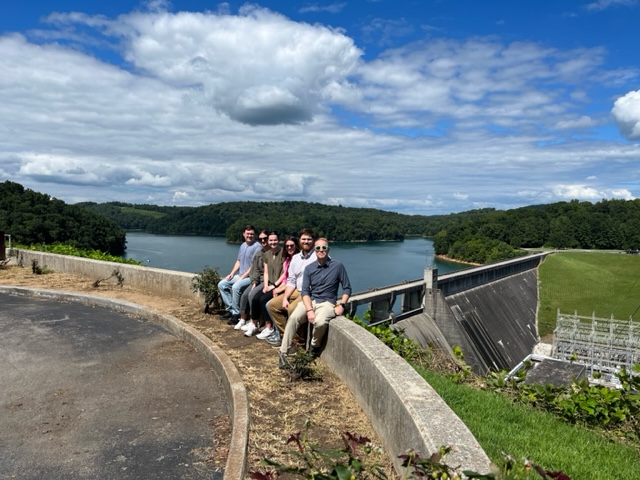
TUSCALOOSA, Ala. – The first cohort of The University of Alabama’s Water-R2O National Science Foundation Research Traineeship program has been assembled and is beginning its unique hydrologic science research and training journey.
Established by a $3 million award in July 2022, the Water-R2O NSF NRT program brings master’s and Ph.D. students together from a variety of water disciplines to start them on a career path that will meet the research-to-operations, or R2O, needs of hydrologic researchers, forecasters and decision makers in government, private and academic sectors.
The program’s goal is to help graduate students integrate hydrologic engineering, artificial intelligence and decision science into an interdisciplinary education program enhancing student capabilities for use-inspired research and careers in water forecasting.
“We are excited by the launch of our Water-R2O NSF NRT program,” said Dr. Steven Burian, director of science for the Alabama Water Institute and UA professor of hydrology and water resources. “The hydrologic forecasting study tour and project-based learning experiences inspire students to create hydrologic modeling, machine learning and decision analysis advances to the operational forecasting of floods, droughts and water quality.”
The cohort is made up of 15 graduate students, also known as NRT trainees. Five trainees are in UA’s Department of Civil, Construction and Environmental Engineering, while the other 10 come from the Department of Geography and the Environment.
“For me, being a part of the Water-R2O NRT Program means connecting water resources and hydrology-based research with modern operations to build more robust, resilient and innovative solutions for communities and the environment,” said Madi Brake, an engineering graduate student and cohort trainee. “I believe this program is a catalyst for innovation and connectivity between academics and practice to help address environmental risks on a local, state and national level.”
The trainees participate in prescribed studies, enrolling in an environmental decision-making course and a hydrologic forecasting seminar during the fall semester. In the spring, they will take a Praxis lab and hydrologic forecasting R2O seminar course. Enrolling in two elective courses; one focused on AI and data science, the other focused on hydrologic modeling and analysis; and completing an immersive experiential learning experience are the final two requirements to fulfill the NRT program.
There are several options from which the trainees can choose to fulfill their experiential learning experience. A few examples include taking part in an international experience, participating in the NOAA National Water Center Innovators Program Summer Institute or completing an internship.
Prior to the fall 2023 semester, approximately half of the trainees participated in a domestic study tour, which is one of several student experiences to bridge the gap between research conducted within a university environment and water operations.
“Students meet with the actual people charged with anticipating and preparing the public for weather and flood hazards and that manage the nation’s water resources,” said Dr. Lisa Davis, associate professor in UA’s Department of Geography. “These meetings help students see firsthand the tremendous job being done in water and weather forecasting.”
The other student experiences and funded travel opportunities include related conferences, which are supported for trainees if presenting products from their NRT team project.
By the beginning of October, the trainees will be placed on multidisciplinary teams to work together to complete an approved NRT team project under the direction of faculty mentors. The trainees’ research efforts will focus on advancing models and predictive tools to increase the certainty and trust of hydrologic prediction among the private sector and government agencies.
“Hydrologic forecasting is essential in my research related to stream connectivity, and in a changing climate, better modeling techniques are imperative in forecasting the drastic changes we are already witnessing in the hydrological cycle,” said Daniel West, a cohort trainee and graduate student in geography. “I applied to the NRT program to learn about these techniques and how I can apply them to my research for the preservation, restoration and conservation of our fluvial ecosystems.”
According to Davis, students going through the program can experience exchanges with real-world water and weather professionals that will impart knowledge that is hard to replicate in the classroom environment. “They learn that water is people – the people that make the forecasts and issue warnings and the people that rely on forecasts and warnings for safety or to protect property,” she said. “It is something they will carry with them throughout their training and will help address ongoing and future water and weather challenges in a way that can be put into practice to benefit the public.”
